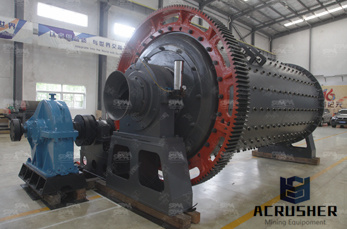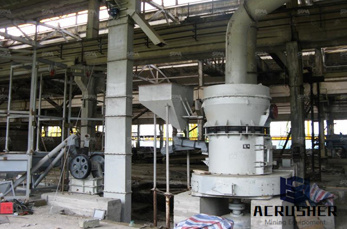(PDF) The manufacture of soda ash in the Arabian Gulf
soda ash assuming full marketability of soda ash and its byproducts in the Arabian Gulf and neighbouring regions. The Solvay and Dual processes are estimated to produce soda ash at a .
 WhatsApp)
WhatsApp)
soda ash assuming full marketability of soda ash and its byproducts in the Arabian Gulf and neighbouring regions. The Solvay and Dual processes are estimated to produce soda ash at a .

Natural soda ash production in May was 950,000 metric tons (t), % higher than the previous month''s production of 880,000 t, according to the Geological Survey. Ending inventories were 242,000 t, % higher than the preceding month''s inventories.

Unnatural soda ash, also known as synthetic soda ash, is manufactured using the Solvay, Hou, or ammoniasoda process. Each method contains a number of different chemicals that leave behind byproducts such as residual calcium carbonate, chloride, and other limestone components. In addition, the salt brine used by the process is usually purified to

In this application, Soda Ash is used as a fluxing agent ( it lowers the melting temperature of the raw material pure silica) thus reducing energy requirements for glass production. The addition of Soda Ash to the glass manufacturing process reduces the melting point of pure silica from 2 300 °C to 1 500 °C.

The synthetic process for the manufacture of soda ash by ammonia soda process was developed by Ernest Solvay in 1861. Natural deposits of soda containing sodium carbonate (known as Trona) mostly occur in America, East Africa, Mexico and China. About 30% of world soda ash production (90% of this is in alone) is from

In this process, ammonium chloride is produced as a coproduct in equivalent quantities and differs from conventional, Solvay process and it does not recycle ammonia. Solvay process or Ammoniasoda process The ammoniasoda process is the dominant technology used throughout the world, hence this process is selected for production of soda ash.

When companies process and produce soda ash, a number of other sodium compounds are made as coproducts, including sodium bicarbonate (also known as baking soda), sodium sulfite, sodium tripolyphosphate, and chemical caustic soda. Soda ash has a number of diversified uses that touch our lives every day. Glass manufacturing is the largest ...

The Solvay process, also referred to as the ammoniasoda process, is the major industrial process for the production of "soda ash" (sodium carbonate).The ammoniasoda process was developed into its modern form by Ernest Solvay during the 1860s. The ingredients for this process are readily available and inexpensive: salt brine (from inland sources or from the sea) and limestone (from mines).

Jul 25, 2014· The leading production process, currently accounting for nearly half of the world''s soda ash, is the Solvay, or ammonia soda, method. This process, commercialized by Ernest Solvay in Belgium in the 1860s, is employed almost exclusively in Europe, where it is used to produce 10 million tons of soda ash annually. It is an ingenious process ...

Soda ash has a number of diversified uses that touch our lives every day. Glass manufacturing is the largest application for soda ash whether it is in the production of containers, fiberglass insulation, or flat glass for the housing, commercial building, and automotive industries.

This invention provides a method for the production of dense soda ash by reacting sodium carbonate decydrate with a light soda ash or soda ash fines at an elevated temperature to produce sodium carbonate monohydrate crystals, and drying the sodium carbonate monohydrate to produce dense soda ash.

Solvay and Dual processes are estimated to produce soda ash at a cost of 132 and I44 /ton respectively. These production costs compare favourably against delivered costs of imported soda ash of 177 /ton. 1. Introduction Soda ash is the commercial name of the tech nical grade sodium carbonate ( Na2C03 ) which

From Wikipedia, the free encyclopedia The Leblanc process was an early industrial process for the production of soda ash (sodium carbonate) used throughout the 19th century, named after its .

Sodium carbonate manufacturing process, solvay process. Sodium carbonate (washing soda) is a white crystalline solid. It exists as a decydrate ( Na 2 CO 2 O) compound . Sodium carbonate is manufactured by solvay process in industrial scale and have very industrial and domestic uses.

Ammoniasoda process, also called Solvay Process, modern method of manufacturing the industrial alkali sodium carbonate, also known as soda process was devised and first put to commercial use by Ernest Solvay, who built a plant in 1865 in Couillet, Belg., and was improved in the 1870s by the Germanborn British chemist Ludwig Mond.. In the ammoniasoda process, common salt, sodium ...

The Leblanc process was the industrial process for the production of soda ash (sodium carbonate) used throughout the 19th century, named after its inventor, Nicolas involved two stages: Production of sodium sulfate from sodium chloride, followed by reaction of the sodium sulfate with coal and calcium carbonate to produce sodium carbonate. The process gradually became obsolete after ...

May 28, 2020· New York City, United States May 28, 2020 /MarketersMedia/ The global soda ash market is forecast to reach USD Billion by 2027, according to a new report by Reports and Data.

Tata Chemicals manufactures light soda ash using the ammoniasoda process. We are the among the world''s largest and the most geographically diversified soda ash companies. Our manufacturing facilities in India, the UK, the US and Kenya constitute an efficient supply chain that can service customers across the globe.

Jan 01, 2007· The evolutions of the process parameters (liquid and gaseous flows, composition, temperatures and pressures) for different steps in soda ash manufacture were studied. The simulation results were compared with real plant operation data in order to validate the applications developed for the manufacturing process of soda ash.

Soda ash is the trade name for sodium carbonate, a chemical refined from the mineral trona or sodiumcarbonatebearing brines (both referred to as "natural soda ash") or manufactured from one of several chemical processes (referred to as "synthetic soda ash"). It is an essential raw material in glass, chemicals, detergents, and other important industrial products.

Nov 19, 2017· Soda ash manufacturing and process flow diagram 1. SODAASH AND BAKING SODA INDUSTRY USAMA PERVAIZ BS CHEMICAL ENGINEER Department of Chemical Engineering, CIIT Lore 2. PRODUCTION OF SODIUM CARBONATE/BICARBONATE • Uses and History • Raw materials • Process flow diagram • Steps involved in production • 3.

Jan 20, 2020· The chemical name of Soda Ash is sodium carbonate. The global soda ash industry constitutes of two production types,, natural soda ash and synthetic soda ash production. Natural soda ash is mined from Trona, which is a naturally occurring mineral ore whereas synthetic soda ash is made using limestone, salt and coke using the Solvay process.

14 practical ways to prevent and eliminate Soda ash in your cold process soap. Let us start with understanding what Soda Ash is. Then, i''ll share some tips and tricks in controlling the main factors that contribute to the production of the Soda Ash byproduct in your homemade cold process soap recipe.

In the context of the soda ash manufacturing sector, "calcining" means the thermal/chemical conversion of the bicarbonate fraction of the feedstock to sodium carbonate. What GHGs Must Be Reported? Soda ash manufacturing facilities must report the following emissions: • CO. 2. process emissions from each soda ash manufacturing line. • CO. 2
 WhatsApp)
WhatsApp)